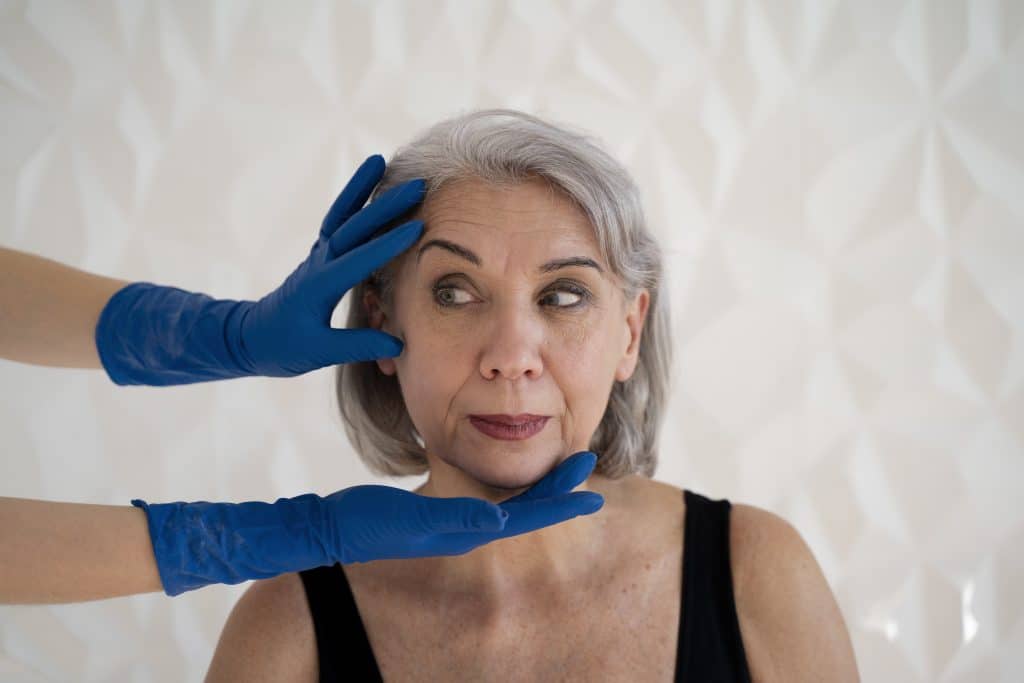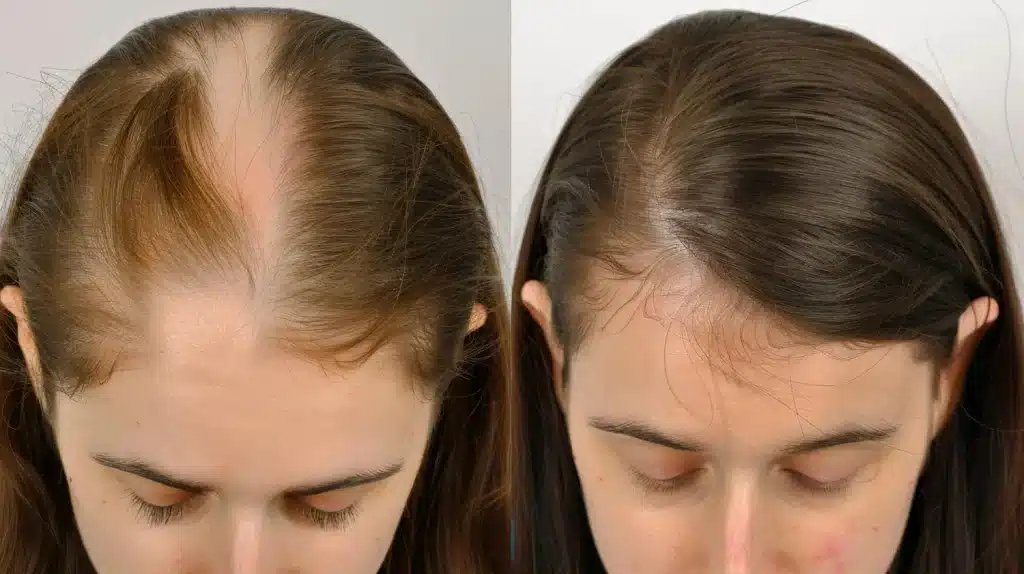The American Society of Plastic Surgeons revealed that in 2022, healthcare professionals administered over 8 million neuromodulator injections. This rising demand for neurotoxins has made them popular among many who want to combat the visible signs of aging.
Botox and Xeomin are two common neurotoxins used to alleviate the effects of aging and enhance appearance. Although they have a similar core ingredient, they differ significantly in their FDA-approved usage. Based on individual needs and potential sensitivities to the formulation, they are suitable for different types of patients and preferences.
This article delves into the nuances of Xeomin and Botox, exploring their efficacy and safety and what dermatologists say about them.
Key Takeaways
- Xeomin and Botox are used to smooth wrinkles but have different formulas. Xeomin is a pure form without extra proteins, which might be better for people who stop reacting to Botox.
- Both treatments are FDA-approved and work by relaxing facial muscles. While results can last up to 4 months, some patients see more prolonged effects with Xeomin.
- Choosing between the two depends on individual needs. Some people may prefer Xeomin due to its purer formula, while others may prefer Botox due to its more extended history of use. Factors like how fast you want results, the injection area on the face, and past treatment reactions matter.
- Safety is essential for both. Most people do not have significant problems after getting treated. But talking to a doctor first ensures the best choice for each person.
- Cost also plays a role in deciding between Xeomin and Botox. On average, Xeomin might cost less over time because it may require fewer sessions for some patients. It is essential to discuss the cost with a doctor or provider before making a decision.
Introduction to Xeomin and Botox
Xeomin and Botox are two treatments medical professionals use to eliminate wrinkles. Botox works by relaxing the facial muscles, reducing wrinkles, and improving smoothness. However, some people may develop antibodies that resist Botox, and in such cases, using Xeomin as a naked type of botulinum toxin without any additives is possible.
Dermatologists have noted that Xeomin’s efficacy is comparable to Botox’s, making it a compelling choice for wrinkle treatment. This feature further enhances its appeal in the field of aesthetic enhancements.
Xeomin and Botox are FDA-approved for treating severe frown lines and crow’s feet for cosmetic and medicinal purposes. The difference is in the formulation: Botox contains proteins in addition to the toxin, whereas Xeomin has only pure type A botulinum toxin. Discover the transformative power of Xeomin and Botox in our comprehensive guide. Witness remarkable results in diminishing crow’s feet before and after treatment with Xeomin.
Mechanism of Action Comparison
Xeomin and Botox contain a botulinum toxin that prevents nerves from instructing muscles to move. This results in less contraction of the tiny facial muscles, making wrinkles less visible. Although both treatments work similarly, they differ in their composition. Botox contains additional proteins surrounding the toxin, while Xeomin is pure and has no extra substances.
Over time, the body may develop less of a reaction to Xeomin due to its pure composition. However, both treatments effectively smooth wrinkles when used correctly, with varying onset times and durations before needing another treatment.
Indications for Cosmetic and Therapeutic Use
Xeomin and Botox serve cosmetic and medical needs. Doctors use them to smooth wrinkles like crow’s feet, frown lines, and forehead creases. Beyond beauty, they help with neck, eye, and limb muscle spasms. They also ease chronic migraines, excessive sweating, and bladder disorders.
These treatments can bring relief where other methods haven’t worked. Their wide range of uses makes Xeomin and Botox valuable tools for doctors looking to address various conditions. Patients seeking smoother skin or relief from muscular issues might find solutions here.
Expert Insights from Dermatologists

Doctors have discovered that Xeomin and Botox effectively smooth wrinkles by relaxing facial muscles with tiny amounts of the substance. According to studies, Xeomin starts working within 3-4 days, similar to Botox.
The results from both treatments can last up to 4 months, but some patients may notice Xeomin’s effects lasting a little longer. Choosing between Xeomin and Botox depends on personal needs and the physician’s recommendation. Both treatments have excellent safety records, making them reliable choices for smoothing lines.
Relative Strengths of Xeomin and Botox
Xeomin and Botox excel at smoothing wrinkles but have unique strengths. Xeomin is pure botulinum toxin with no additives, which means less risk of allergic reactions or resistance over time. Patients seeking a natural look often choose Xeomin for its precision in treating fine lines and crow’s feet.
On the other hand, Botox has a broader treatment area and is well-known for its effectiveness in reducing deeper facial creases. Both treatments show results within days, yet their lasting power varies slightly.
Botox might keep wrinkles at bay for up to four months, while Xeomin’s effects can last three to six months. But everyone’s body reacts differently. Some might find Botox more effective, while others prefer Xeomin outcomes. Each product has its own set of guidelines on how often you can get treated.
Factors Influencing Treatment Decisions
Knowing the limits of Xeomin and Botox helps doctors make better choices. They consider several things as they make decisions.
- Accurate diagnosis of a medical condition is crucial for guiding treatment decisions.
- The severity of the condition can influence treatment choice, but patient preferences and goals also play a significant role.
- Consider the patient’s health and medical history when exploring treatment options.
- It’s essential to assess the risks and benefits of each treatment option when making decisions.
- Financial considerations and insurance coverage may also impact treatment decisions and the availability and accessibility of various treatment modalities.
- Expert advice and recommendations from healthcare providers are essential when deciding on treatment options.
Key Considerations When Comparing Xeomin and Botox

Xeomin and Botox work differently, and the time they take effect varies from person to person. Some people may notice results in a few days with Xeomin, while it may take a little longer with Botox. Xeomin and Botox are safe and FDA-approved, but people may prefer one over the other based on their experience.
Some people may feel more satisfied with one treatment than the other. Doctors can consider patient satisfaction levels to help determine which option is best for each person’s unique needs.
Duration of Effect Analysis
Understanding the longevity of the effects of Xeomin and Botox is essential for medical professionals guiding their patients through cosmetic or therapeutic interventions. While similar in use, these two neurotoxins present subtle variances in their duration of action, impacting patient satisfaction and treatment schedules.
| Aspect | Xeomin | Botox |
| Onset of action | 3-4 days | 2-3 days |
| Peak effect | 1-2 weeks | Two weeks |
| Duration of effect | 3-4 months | 3-6 months |
| Patient variability | High | Moderate |
| Consistency over time | Consistency may decrease with repeated use | Generally consistent |
Patients often report back with experiences that highlight these differences. For instance, some may find the slightly quicker onset of Botox preferable for upcoming events. Others value the predictability of the duration of Xeomin’s effects in their treatment planning. Although the safety profiles of both products are broadly comparable, individual responses can vary, influencing patient and clinician preferences.
This analysis needs to establish a clear winner but emphasizes the importance of personalized treatment plans. Success with either product hinges on understanding patient goals, lifestyle, and treatment history. Expert clinical judgment combined with this achieves the best possible outcomes.
Safety Profile Assessment
When it comes to the safety profile of this treatment, one of the most common questions many patients and doctors ask is, “Is Xeomin FDA-approved?” Both of them have FDA approval, which means they passed many safety tests. Most people do not have significant problems after getting these treatments. Some may get small red spots in the injected area or feel tired.
They are both highly effective and safe, but there are some differences that patients should be aware of when deciding which treatment to choose. One significant difference between Xeomin and Botox is their manufacturing process. Xeomin is a “naked” injectable containing only the main ingredient without extra proteins.
In contrast, Botox contains additional proteins surrounding the toxin, which may benefit some patients. These proteins can help slow the toxin’s spread, making the treatment more precise and targeted.
Impact on Patient Satisfaction
Patient happiness is crucial when comparing Botox and Xeomin. While both treatments achieve high satisfaction levels, subtle differences can influence preferences. Patients prefer Xeomin for its natural appearance. However, Botox has quicker results and longer-lasting effects, reducing the need for touch-ups.
Treatment objectives determine a preference, such as emphasizing fewer appointments or a natural appearance. Feedback shows both options are safe and effective, but patient experiences offer valuable insights into making everyone happy with their choices.
Addressing Common Questions and Misconceptions
Clearing up common misconceptions and addressing frequently asked questions can provide valuable information to those considering Xeomin or Botox for cosmetic purposes. By understanding the differences between these treatments, individuals can decide which option may best suit their specific needs and goals.
Differences in Formulation and Efficacy
Xeomin and Botox differ in their composition. Botox has additional proteins surrounding the botulinum toxin, while Xeomin is pure botulinum toxin, making it a cleaner option. Due to the absence of extra proteins, Xeomin is less likely to cause resistance over time.
Both treatments work well for wrinkles, but Xeomin may be better for those who have developed antibodies against Botox. Results appear in a similar amount of time, but individual experiences vary based on treatment areas and personal factors.
Practical Advice From Dermatologists
Dermatologists suggest knowing your skin type is crucial. When considering Xeomin or Botox, it’s essential to understand which option works best for you. While both can smooth wrinkles, Xeomin may work better for the forehead, and its results may show faster.
Choosing between Xeomin and Botox? Doctors also share that patient history plays a significant role. They emphasize checking patients’ past reactions to similar treatments and discussing them openly, which helps avoid side effects and ensures you get the best care for your needs.
Importance of Patient Education and Informed Consent
Effective communication between doctors and patients is crucial for ensuring proper treatment with Xeomin or Botox. Doctors and patients can work together to choose the best care and achieve better outcomes by discussing options, addressing concerns, and answering questions.
- Collaboration for Safe and Satisfactory Outcomes: Collaboration between doctors and patients ensures safe and satisfying results. Transparent communication builds trust and empowers decision-making regarding wrinkle treatments and other aesthetic requirements. All parties benefit from efficient and smooth treatment when information is shared back and forth.
- Empowering Patients With Knowledge and Confidence: Clear information boosts trust in Xeomin therapy. Patients understand treatment benefits, duration, and post-treatment care. Candor’s work with doctors on treatment options produces positive results for patients and healthcare professionals.
Conclusion
Dermatologists emphasize the significance of personal preferences when choosing between Xeomin and Botox, as each treatment has advantages. While Botox is versatile, pure Xeomin may prevent the formation of antibodies. Several factors can impact healthcare decisions, including treatment duration, safety, cost, and start time.
About: MedicalSpaRX is a one-stop shop for wholesale medical and cosmetic supplies. They offer a wide range of products, including dermal fillers, Botox, and skin care products, at competitive prices with fast shipping. Plus, they have a referral program that rewards you for introducing new customers.
FAQs
1. What’s the difference between Xeomin and Botox?
Dermatologists say Xeomin is a bit more pure, which means it doesn’t have the extra proteins that Botox does, which can make a difference for some people.
2. Is Xeomin FDA-approved?
Yes! Just like Botox, Xeomin has received the FDA’s approval.
3. How long does it take to see results from Xeomin?
You’ll start noticing changes in about 3 to 4 days. The whole effect will take two weeks to kick in.
4. How often can I get treated with Xeomin?
Doctors usually suggest changing it every 3 to 6 months. However, treatment frequency may vary depending on response and severity.
References
J Neurol. 2020; 267(5): 1340–1347.
Published online 2020 Jan 20. doi: 10.1007/s00415-019-09681-7
Villar, F. Xeomin® vs. Botox® A Side-by-Side Comparison in the Same Patients. Plastic and Reconstructive Surgery. 2015 October. DOI: 10.1097/01.prs.0000472470.94248.01
Park, J.-Y., Sunga, O., Wanitphakdeedecha, R., & Frevert, J. (2020). Neurotoxin Impurities: A Review of Threats to Efficacy. Plastic and Reconstructive Surgery Global Open, 8(1), e2627





















